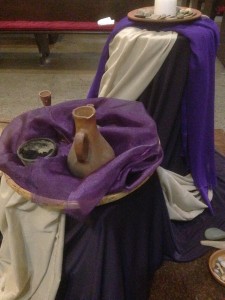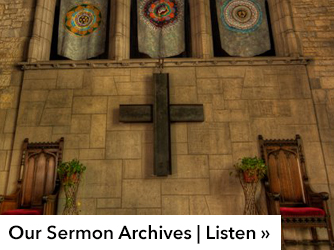 Throughout the Bible — such as with Job who wonders why bad things happen to good people, and with Jonah who wonders why good things happen to bad people — the use of ashes and the donning of sackcloth is seen as signs of one’s repentance. The symbolic use of ashes in this sense continues today as many Christians, many of us, had ashes imposed on our foreheads in the sign of the cross during Ash Wednesday, the first day of Lent.
Throughout the Bible — such as with Job who wonders why bad things happen to good people, and with Jonah who wonders why good things happen to bad people — the use of ashes and the donning of sackcloth is seen as signs of one’s repentance. The symbolic use of ashes in this sense continues today as many Christians, many of us, had ashes imposed on our foreheads in the sign of the cross during Ash Wednesday, the first day of Lent.
As a Christian community we also put on our sackcloth in the form of the three Lenten banners that hang by the western windows. Each sackcloth banner announces a Lenten theme, moving us from “sin” through “reflection” to “repentance,” or as the theologians of the 1985 South Africa “Kairos Document” teaches us: see-judge-act.
Many of the words were painted on these banners by the youth and young adults in this congregation, but, like the empty niches above waiting for your saints, there is room left on these three banners for you to mentally inscribe your sins and the sins that confront you, how you reflect on them, and how you engage in acts of repentance for them.
In this way, through these three Lenten banners, we communally wear our sackcloth in line with our biblical ancestors before God.

